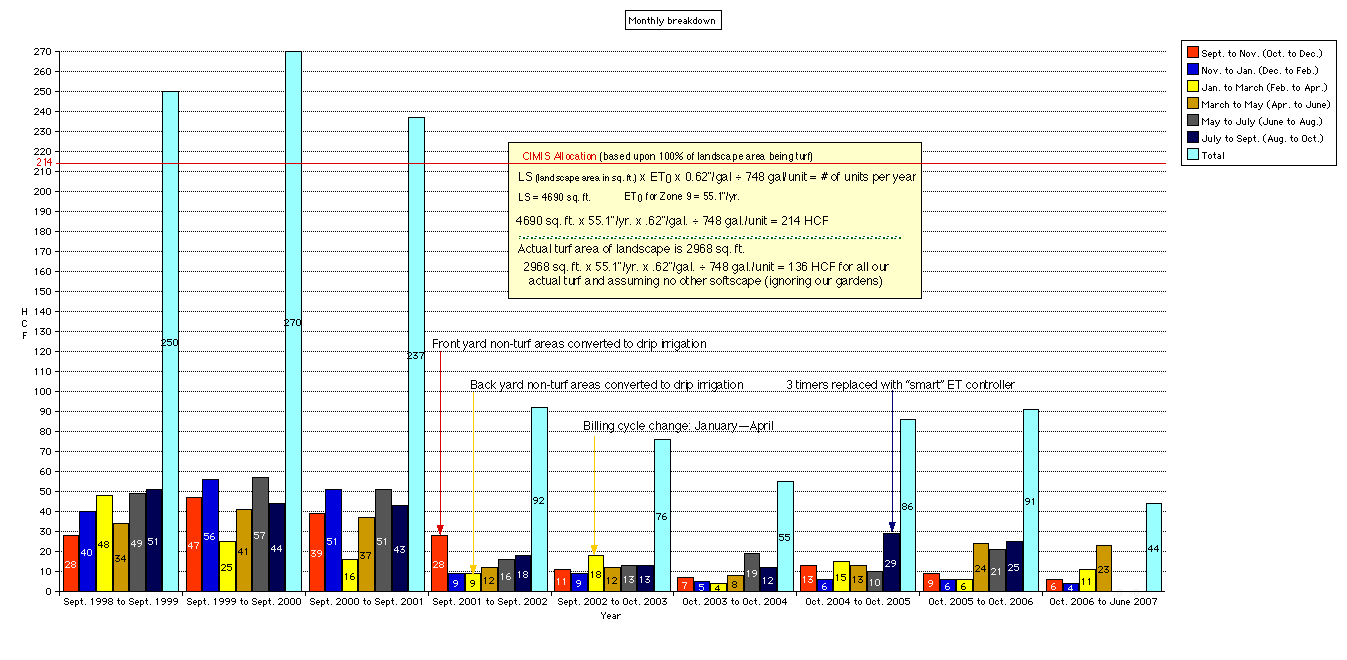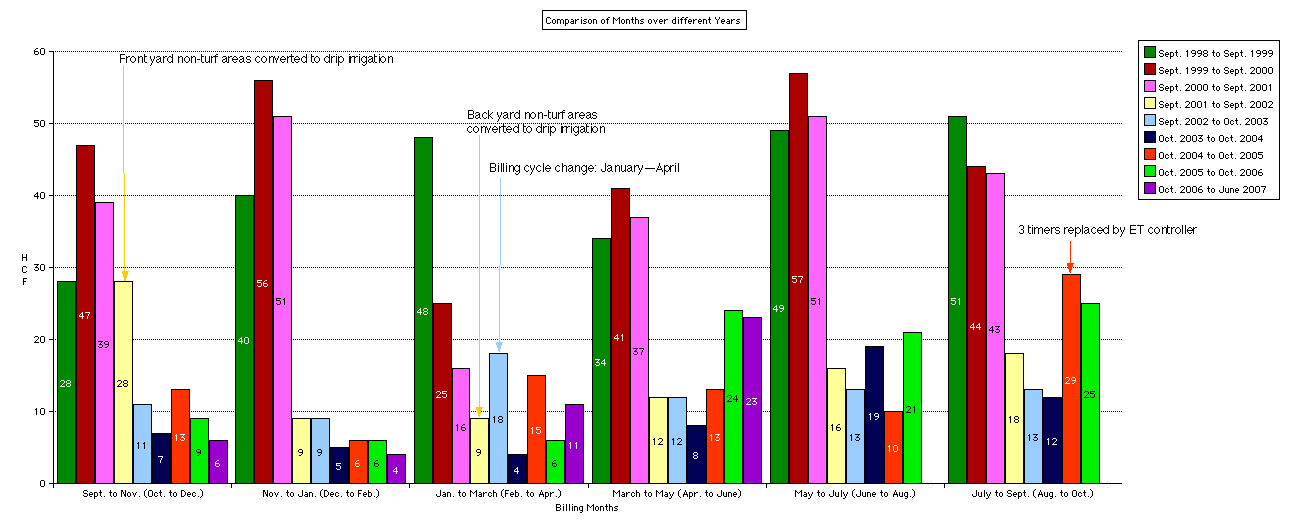 Originally written and posted Tuesday, 23 August 2005
Originally written and posted Tuesday, 23 August 2005Content last modified Saturday, 9 January 2021
 Originally written and posted Tuesday, 23 August 2005
Originally written and posted Tuesday, 23 August 2005
Content last modified
Saturday, 9 January 2021

As suggested by our ever-informative Protector del Agua instructor Juan Zamora, i gathered information and calculated the CIMIS reference water consumption for a yard the size of ours, then tabulated and compared corrected* actual water usage over time with this reference number.
As explained in class, 4 units (Hundred Cubic Feet: HCF) per person per billing period are subtracted from the total water bill to account for non-irrigation water usage. This correction has been applied to all applicable numbers on this page.
As shown in the chart above, the CIMIS equation is:
LS x ET0 x 0.62"/gal. ÷ 748 gal./unit = # of units per year
Our softscape (yard) area—LS—is approximately 4690 sq. ft. According to CIMIS, we are in Zone 9, whose ET0 is 55.1 inches per year. Plugging in the numbers and cranking through the equation produces a CIMIS reference value of 214 Hundred Cubic Feet (HCF) units per year for a yard of our size, based upon the entire area being thirsty turf grass.
As discussed in class, this generous number more or less sets the upper limit for water usage for the typical mixed-plant home landscape. As can be seen from the chart, we were exceeding this amount by anywhere from 23 to 56 HCF in the first three years of our occupancy of this house: seriously overwatering!
Late in 2001, we began to convert the gardens (non-turf softscape areas) from fixed spray head sprinklers to drip irrigation, starting with the front yard. The drop in water consumption is immediately apparent. As part of the same projects, the turf sprinklers were converted from the same Champion (and related brands) small brass fixed spray heads (that also had covered [sorta] the gardens) to gear-driven rotary heads (currently K-Rain Dial-A-Nozzle). The primary motivation for this change was to get rid of the tripping hazard “gopher holes” in the turf. The rotary heads are meant to cover the turf from the edges, out of the way of human feet.
Other than the out-of-control squirrels sometimes chewing through the drip hoses, we and our garden plants are highly satisfied with the drip conversion: far less water consumption, fewer weeds, much more even coverage of desired plants. Our turf has not faired so well, for several reasons, including our cluelessness (until the Protector del Agua class) regarding turf care, and some mistakes in the design of the new rotary head system. Water allocation may be another issue….
The actual turf area of our landscape is 2968 sq. ft. Plugging this number into the CIMIS equation yields 136 HFC per year, just for our turf. Given that there is no allocation for our garden plants whatsoever in this number, it effectively sets a lower limit of reasonable water use for our landscape. It can be easily seen from the chart that we are well below that number, indicating that one of the reasons our turf looks heinous is that it is very likely not getting enough water! Whether we will choose to increase the watering levels or decrease the turf area of our landscape —or both— remains to be seen.

This chart contains the same data as the chart at the top of the page, displayed differently. In this chart, same-months (same season) billing periods from different years are placed next to each other, making it easier to see the changes from year to year for any particular two-month billing cycle.
You’ll notice an increase in the water consumption during the hotter months with the newer data once the three timers were replaced by the ET controller, starting in summer 2005. This is a combination of more realistic turf cycle settings plus the automatic adjustment of the ET controller. It is more obvious than ever that we were seriously under-watering our turf! That is likely still the case (especially in the front yard), though not to as great a degree as before.